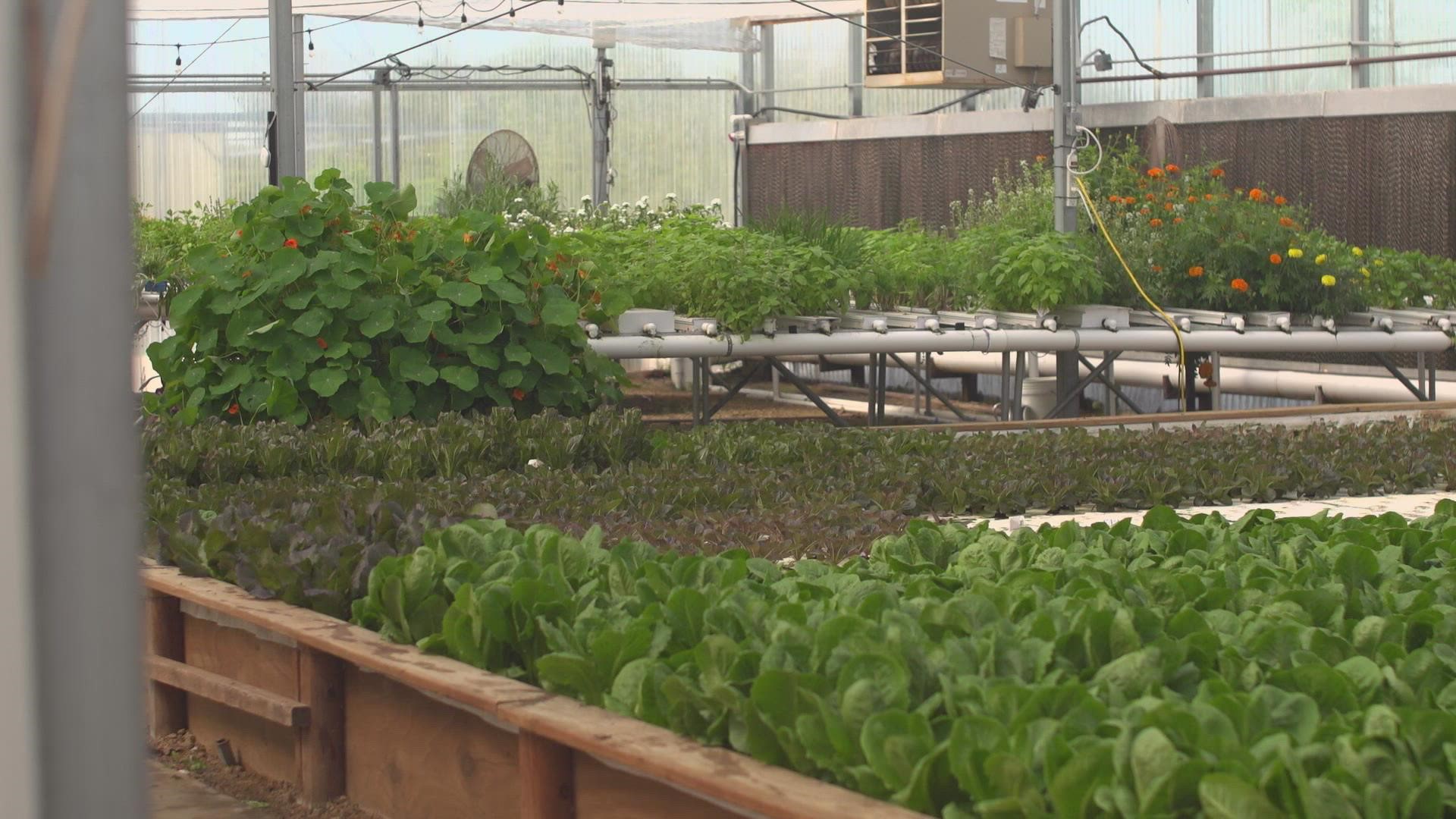COLLIN COUNTY, Texas — For most people, their connection to food is simply through purchasing and consumption. Food inflation at the grocery store is a topic that dominates the news because it affects more people.
But there is a large portion of growers, product suppliers, transporters, retail and restaurants directly affected by sky-high inflation.
Jeff Bednar at Profound Microfarms in Lucas specializes in variety. His sustainable farm uses techniques like hydroponics to grow hundreds of rare culinary herbs, microgreens, edible flowers and leafy greens. He delivers to over 60 restaurants across North Texas twice a week and delivers to private homes.
"As a farmer we need to have inputs or we don't have outputs. That's where a lot of the concerns are now," said Bednar.
He, like many, is not immune to inflation. The rising costs on the farm are a direct reflection of rising prices at the grocery stores.
The cost of food rose nationally 0.9% from March, according to the latest release of data of the Consumer Price Index. That makes it the 17th consecutive month the food index went up.
"The thought of families not having easy access to that nutrition is heartbreaking," said Erica Yaeger, chief external affairs officer at North Texas Food Bank.
Inflation and rising prices have had an impact on buying power, especially for families that are food insecure.
Yaeger tells WFAA there are 800,000 people in North Texas covering 13 counties who face food insecurity.
The North Texas Food Bank was making 7.3 million meals a month before COVID, 10.5 million meals during COVID and now on pace to serve 12 million meals, likely from inflation.
"We've determined that the impact of inflation alone on food purchase costs is 800,000 alone for this year," said Yaeger.
At the North Texas Food Bank what's not donated is purchased. And now due to inflation, items are being purchased at a much higher rate. Yaeger says fresh fruits and vegetables, dairy, protein and kid snacks are very hard to find now.
Farmer Jeff Bednar knows all about high rates because on his end labor costs, seed costs and utilities have skyrocketed. He says fertilizer suppliers have asked growers to stock up or use sparingly.
"A lot of the phosphorus is coming from Russia and that's for the world," said Bednar.
And then there are the costs to a farmer that consumers don't normally think about. The styrofoam rafts the plants grow in went from $9 to $22 each.
The plastic clam shells used for packaging were 25 cents and are now a dollar. Bednar tells WFAA he has not raised his prices for restaurants and home deliveries since 2017.
He understands he's taking a hit and hoping to make up for it in volume. He says his lower prices are making him competitive in the market.
"I never met another farmer who got in this game to get rich," said Bednar.
The Food Bank is also having to make tough decisions. With donor fatigue and product substitutes, food banks are constantly having to manage books and operations to meet the demand.
"We've had to replace peaches on our shelves with canned pears that we can get for a little less expensive," said Yaeger.
Whether you're a farmer or a consumer or something in between, inflation has a stranglehold. The real question is, when will it let go?

